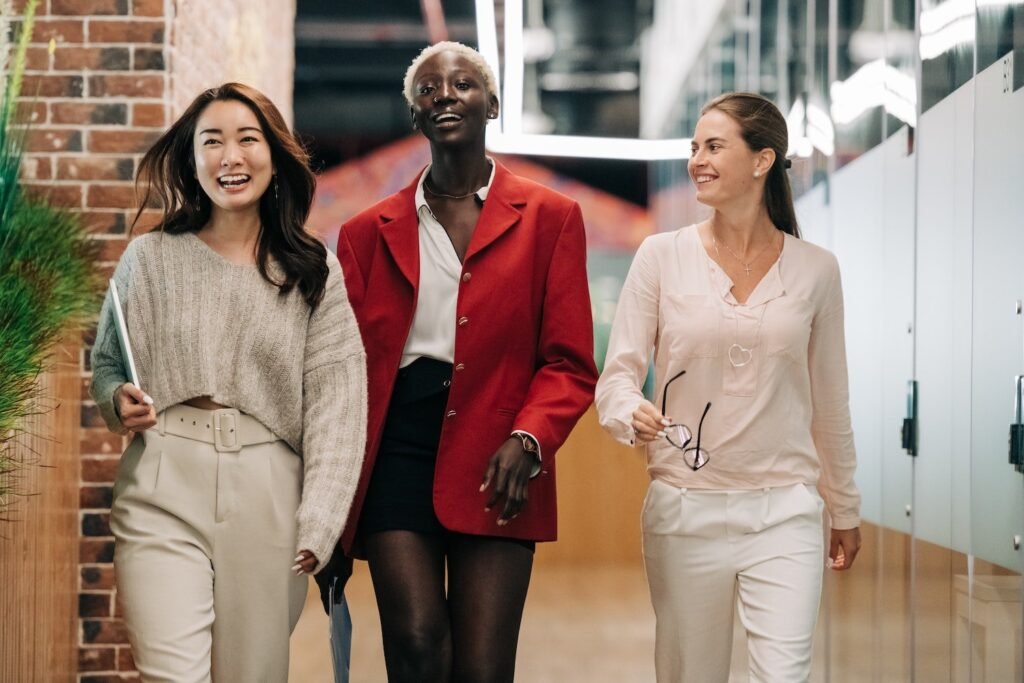Confidence isn’t something you’re born with—it’s a skill, and like any skill, it can be developed. Whether you’re stepping into a meeting room, entering a social gathering, or preparing for a big presentation, how you carry yourself sends powerful messages to those around you. Understanding how to build and reflect confidence through body language can profoundly impact how others perceive you—and how you perceive yourself.
This guide explores not only the mechanics of confident body language but also what’s happening internally when we display self-assurance. By aligning your inner mindset with external cues, confidence becomes something you actively create rather than passively wait for.
Understanding Confidence From the Inside Out
Before addressing how confidence looks from the outside, it’s important to understand what it feels like internally. Confidence doesn’t mean you believe you’re perfect; it means you trust in your ability to handle situations, recover from setbacks, and learn from mistakes. It’s rooted in self-acceptance and the willingness to show up despite uncertainty.
People often confuse confidence with arrogance, but the two couldn’t be more different. Arrogance is brittle—it masks insecurity. Confidence, in contrast, is grounded and quiet. It’s not about dominating a room but about being present in it without needing to prove anything.

The Connection Between Body Language and Confidence
Your body and brain are deeply connected. Research shows that the way we hold our bodies not only reflects our emotional state but can actually influence it. Slouching and shrinking into yourself can make you feel small and hesitant, while upright posture and open gestures can reinforce feelings of control and presence.
This two-way feedback loop between mind and body is why body language is such a powerful tool—not only for conveying confidence but also for cultivating it.
Posture: Your Foundation of Presence
Your posture tells people a lot about how you feel. Standing or sitting with an upright spine, shoulders relaxed but not drooping, and head held level projects calmness and credibility. It also helps you feel more composed. When you’re aware of your body alignment, you’re more likely to slow down, breathe deeply, and engage thoughtfully.
If you’re unsure about your posture, do a quick scan of your body. Are your shoulders creeping upward? Is your chest collapsing inward? Gently adjust until you feel more open and grounded.
Eye Contact: The Confidence Connector
Eye contact can either build bridges or walls. Too little, and you may seem nervous or disengaged. Too much, and it can feel confrontational. The goal is to strike a natural balance—looking someone in the eye when you’re speaking or listening, then briefly breaking contact before returning.
Good eye contact signals respect, attention, and trustworthiness. When done appropriately, it also encourages others to see you as someone who is comfortable in their own skin.
Gestures: Keep Them Open and Intentional
Confident people tend to use gestures that are deliberate, open, and aligned with what they’re saying. Avoid fidgeting, hiding your hands, or using overly large movements that distract from your words.
Instead, let your gestures support your message. Use your hands to emphasize key points, but keep them within a comfortable range. This kind of expressiveness helps people connect with your message and see you as authentic.
Facial Expressions: Let Them Match Your Words
When your face contradicts what you’re saying, people notice. A confident communicator ensures their facial expressions are consistent with their words. A relaxed jaw, a soft but genuine smile, and brows that move naturally as you speak all help in building rapport.
If you’re trying to appear calm but your face looks strained or overly serious, your message may come across as forced. Practice letting your expression reflect your tone to appear more genuine and composed.
Breathing: The Often-Forgotten Confidence Tool
Shallow breathing signals stress. Deep, rhythmic breathing does the opposite—it grounds you and gives you a moment to pause and respond rather than react. Practicing breath control can help slow your heart rate, quiet your thoughts, and project steadiness.
Before walking into a high-stakes situation, take a few deep breaths. Inhale through your nose, hold briefly, and exhale slowly. This small act can have a big impact on how you show up.
Silence: The Power Move
Confident people are comfortable with pauses. They don’t rush to fill silence because they trust the value of their words. If you’re constantly speeding through your sentences or apologizing for speaking, you may appear unsure.
Practice using silence to gather your thoughts, emphasize points, or give others space to absorb what you’ve said. Silence used well is a powerful form of presence.
Self-Awareness and Practice
Lastly, developing confident body language isn’t about faking it—it’s about becoming more aware of how you move, speak, and interact. It’s okay to feel nervous or unsure, especially in unfamiliar situations. The key is to keep showing up and making conscious adjustments.
Confidence doesn’t appear overnight. It builds with repetition and reflection. Record yourself speaking, ask for feedback, or observe people you admire. These small steps can help you develop a style that feels natural yet self-assured.
Final Thoughts
Confidence is both an internal belief and an external behavior. The more you align your thoughts with your posture, eye contact, gestures, and voice, the more authentically confident you’ll become. You don’t need to pretend to be someone you’re not. Instead, focus on small, consistent shifts that help you step into your own authority.
When you begin to move with intention, speak with clarity, and hold space with ease, people notice. But more importantly, you notice—and that’s where lasting confidence begins.
